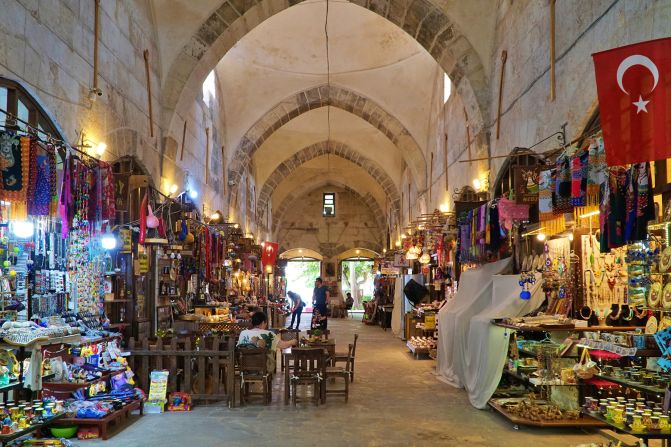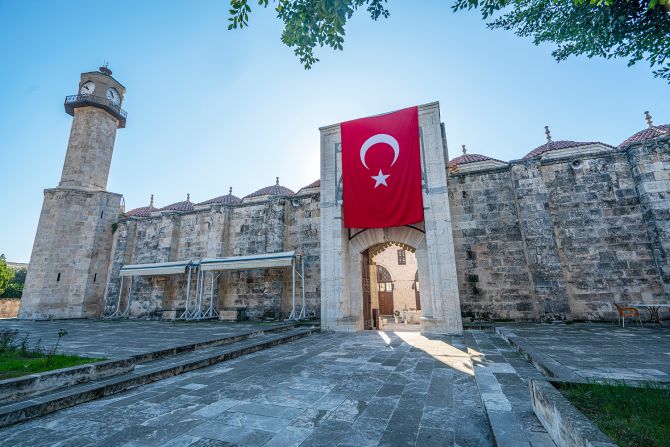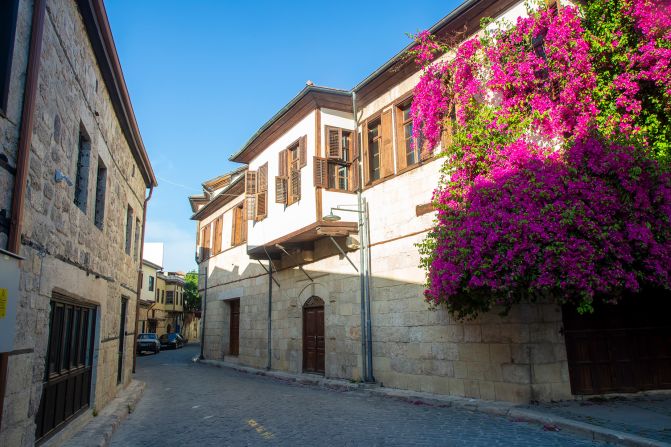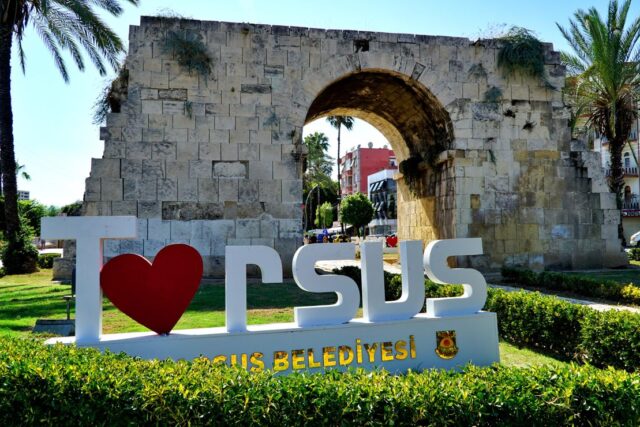Tarsus, Turkey: A Convergence of Faiths and History
Discovering Tarsus: A Town of Ancient Wonders
Tarsus, a town in eastern Turkey with a 7,000-year history, is a place where history, religion, and culinary delights seamlessly blend. Located about 180 miles from the Syrian border, Tarsus offers visitors a rich cultural experience that includes significant religious landmarks and some of the best hummus you’ll ever taste. Situated 12 miles inland from the Mediterranean and 560 miles southeast of Istanbul, Tarsus was originally founded near the Cydnus River. This strategic location made Tarsus a crucial hub for trade as early as 1600-1180 BCE when it was under the rule of the ancient Hittite civilization. By 67 BCE, under Roman rule, Tarsus became the capital of Cilicia Pedias, a fertile plain in modern-day southeast Turkey, and flourished as a center of commerce and culture.
A Hub of Education and Philosophy
In ancient times, Tarsus was known for its educational and philosophical institutions. According to Atalay Dik, a local mariner and enthusiast of his hometown, Tarsus was renowned as a center for education, philosophy, and important universities. Even today, students from universities in Alexandria and Athens come to Tarsus to pursue their Master’s degrees. Dik, who often shares his knowledge with tourists at the family-owned Saint Paul Café and Restaurant, takes pride in Tarsus’ historical significance as a seat of learning.

Walking in the Footsteps of St. Paul
Tarsus is a town where the past is ever-present, offering visitors the opportunity to explore centuries-old mosques and churches. This is a place where Christianity and Islam have coexisted and shaped a rich cultural tapestry. Tarsus is also the birthplace of St. Paul, one of the most influential figures in early Christianity. Born here as Saul, a Jew, around 4 BCE, he later converted thousands to Christianity. Pilgrims visiting Tarsus can explore St. Paul’s Church, also known as the St. Paul Memorial Museum, which was commissioned by the Orthodox community in 1850. The church was built on the site of a much older place of worship dating back to the 11th or 12th century. Although there has been no official Christian community in Tarsus since 1923, restoration efforts in 2001 revived the church’s frescoes, which feature depictions of Jesus flanked by the four evangelists—Matthew, Mark, Luke, and John.
The Legend of Daniel and His Final Resting Place
The biblical story of Daniel, who was thrown into a den of lions for praying to his God, is well known. In the Turkish version of the tale, Daniel is believed to have died in Tarsus after traveling there in his old age to pray for rain during a severe drought. According to historical records, after Tarsus was conquered by the forces of Ömer, an 11th-century caliph, a body was discovered shrouded in cloth with gold thread. A ring on the body’s finger bore the image of a child standing between two lions, leading Ömer to believe it was Daniel. He ordered the grave to be buried deeper to prevent its discovery. The tomb remained undisturbed until renovations in 2006. Known as Danyal Peygamber Kabri, this site is unique because visitors can reach it by walking through a 19th-century mosque, past the remains of a 16th-century Ottoman bath, and over the arches of a bridge that once spanned a river. The mosque is still in use, so visitors must adhere to Islamic standards of modesty by covering their arms and legs, and women must wear headscarves, which are available for borrowing.
Exploring Mosques and Markets
Near Daniel’s tomb is the 16th-century Ulu Camii, Tarsus’ Grand Mosque, whose 33-foot minaret also serves as a clock tower. The clock was added in the 19th century and imported from Europe. Adjacent to the mosque is Kırkkaşık Bedesten, or the “40 Spoons Bazaar,” a covered market originally built as an imaret (soup kitchen) in 1579. The bazaar is a bustling marketplace with stores selling Turkish ceramics, shawls, evil eyes, and other souvenirs. One of the most popular souvenirs is Cleopatra’s Potion, inspired by the legendary Egyptian queen who met Roman commander Mark Antony in Tarsus in 41 BCE. The potion, believed to have kept Cleopatra eternally youthful, is sought after by many domestic tourists.

The Legacy of Bilal ibn Rabah
In Tarsus, another historical site of significance is the Bilal Habeşi Mescidi. Bilal ibn Rabah, born into slavery in Mecca, became one of the most trusted companions of the Prophet Mohammed. After converting to Islam in 615 CE, he was persecuted but later emancipated, becoming Islam’s first-ever muezzin, the official who calls the faithful to prayer. The small mosque built in his honor in the 7th century is believed to be the site of the first Islamic call to prayer in Tarsus. Though the structure is modest, its historical significance is profound.
Savoring Tarsus: Hummus and History
Tarsus is not only rich in history but also in culinary delights. The hummus served in Tarsus is famous for its exceptional taste. Local favorite Kervan Humus offers a plate of slightly warm, creamy hummus drizzled with sizzling oil, parsley, whole chickpeas, and red pepper flakes. For those with a bigger appetite, the hummus with sucuk (spicy sausage), pastırma (cured meat), or steak is highly recommended.
Exploring the Old Ottoman Neighborhood
After indulging in the local cuisine, visitors can stroll through the Kızılmurat neighborhood, where a stretch of Roman road was accidentally discovered in 1993. The streets are lined with old Ottoman houses adorned with wooden beams, white plaster walls, and traditional cumba (projecting windows). The local government has encouraged the restoration of these houses to their former glory, preserving the unique character of this part of Tarsus. A notable site to visit is the House of St. Paul, where the apostle is said to have been born. Although only the foundations remain, it is still a significant pilgrimage site.
Refreshing Moments in Tarsus
Visitors can also enjoy a glass of homemade lemonade at Saint Paul Café and Restaurant, located in the heart of the old town. The café, housed in a 180-year-old building, is owned by Hikmet and Hasan Oğuzcan, cousins of Atalay Dik. The café retains many of the former owners’ possessions, creating a charming and quirky atmosphere.

Tarsus: A Tapestry of Cultures
Tarsus is a town where Christianity and Islam coexist, where history and culinary traditions intertwine, and where ancient architecture stands alongside bustling markets. The town’s museum offers fascinating archaeological finds and ethnographic displays that depict traditional local scenes. According to Atalay Dik, visitors should spend at least three days in Tarsus to fully appreciate its rich history and culture. As someone who has traveled extensively, Dik says, “I always feel calmer when I return to Tarsus. I can breathe in culture and tolerance towards human beings more deeply, living here amongst all the ancient culture and civilizations with antique ruins all around the city.”











